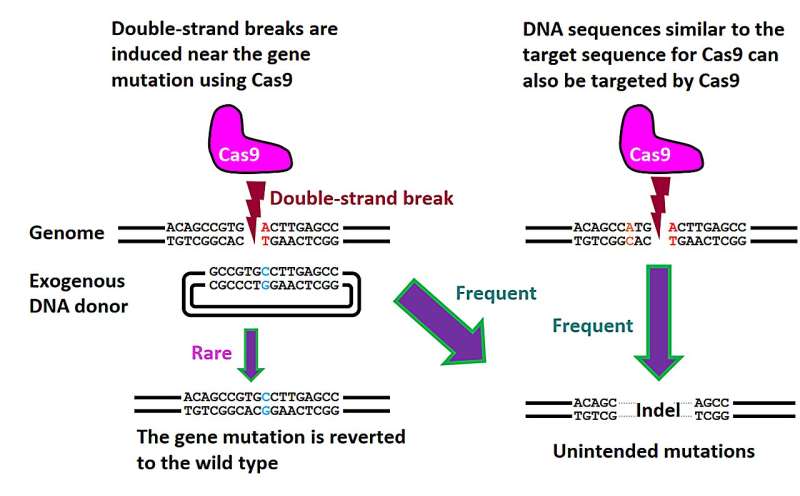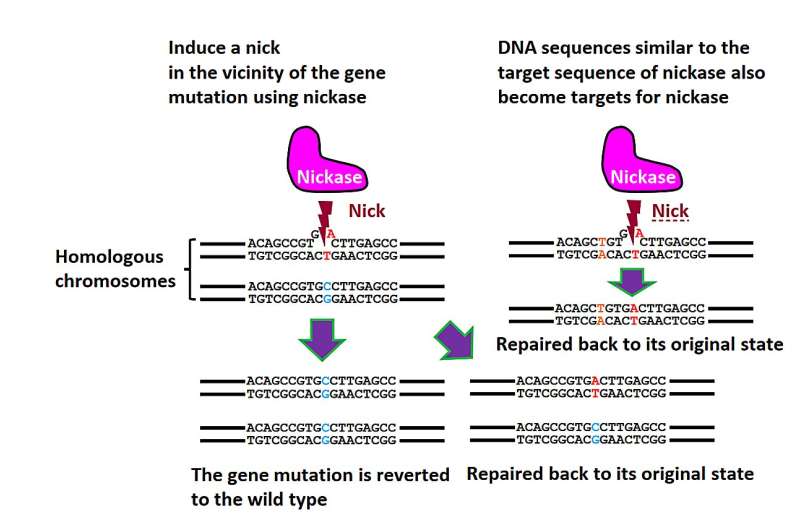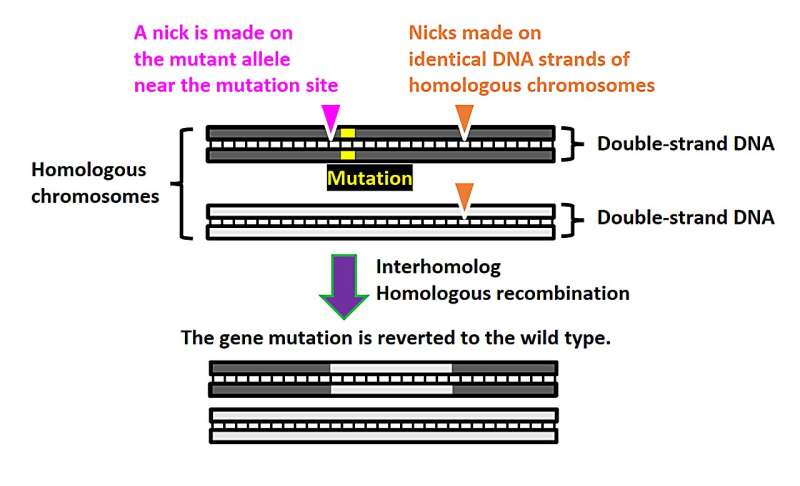This article has been reviewed according to Science X's editorial process and policies. Editors have highlighted the following attributes while ensuring the content's credibility:
fact-checked
peer-reviewed publication
trusted source
proofread
A NICER approach to genome editing

The gene editing technique CRISPR/Cas9 has allowed researchers to make precise and impactful changes to an organism's DNA to fix mutations that cause genetic disease. However, the CRISPR/Cas9 method can also result in unintended DNA mutations that may have negative effects. Recently, researchers in Japan have developed a new gene editing technique that is as effective as CRISPR/Cas9 while significantly reducing these unintended mutations.
In a new study published in Nature Communications, researchers led by Osaka University introduced a novel technique called NICER, which is based on the creation of multiple small cuts in single DNA strands by an enzyme called a nickase.
Traditional CRISPR/Cas9 editing uses small pieces of genetic code called guide RNAs and an enzyme called Cas9. The guide RNAs target a specific section of the DNA and the Cas9 enzyme initiates a break in the double-stranded DNA structure at this location. This double-strand break is key for initiating changes to the DNA.
However, cellular repair of double-strand breaks can lead to unintended DNA mutations, as well as the integration of exogenous DNA to the human genome, which raises safety concerns for clinical applications of CRISPR/Cas9 technology. To minimize these unintended mutations, the Osaka University-led research team investigated the use of Cas9 nickase, which creates single-strand breaks or "nicks" in DNA that are typically repaired without causing mutations.

"Each chromosome in the genome has a 'homologous' copy," says lead author of the study Akiko Tomita. "Using the NICER technique, heterozygous mutations—in which a mutation appears in one chromosome but not its homologous copy—are repaired using the unmutated homologous chromosome as a template."
For their initial experiments, the research team used human lymphoblast cells with a known heterozygous mutation in a gene called TK1. When these cells were treated with nickase to induce a single cut in the TK1 region, TK1 activity was recovered at a low rate. However, when the nickase induced multiple nicks in this region on both homologous chromosomes, gene correction efficiency was enhanced approximately seventeen-fold via activation of a cellular repair mechanism.

"Further genomic analysis showed that the NICER technique rarely induced off-target mutations," says senior author Shinichiro Nakada. "We were also pleased to find that NICER was able to restore the expression of disease-causing genes in cells derived from genetic diseases involving compound heterozygous mutations."
Because the NICER method does not involve DNA double-strand breaks or the use of exogenous DNA, this technique appears to be a safe alternative to conventional CRISPR/Cas9 methods. NICER may represent a novel approach for the treatment of genetic diseases caused by heterozygous mutations.
More information: Inducing multiple nicks promotes interhomolog homologous recombination to correct heterozygous mutations in somatic cells, Nature Communications (2023). DOI: 10.1038/s41467-023-41048-5
Journal information: Nature Communications
Provided by Osaka University




















